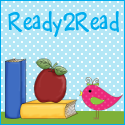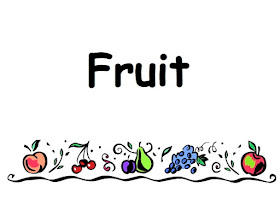After your child can has been introduced to the sight words from list 1 (he does not need to know them well, just an introduction to them is enough), he is ready for his first emergent-reader book. Your child will begin by reading books with sight words that you have introduced to him, and the Guided Reading Level A. In a Level A book you will notice that the book is sight word based, has a repeated pattern, and one line of text consistently placed in upper left to reinforce directionality (reading from left to right). By using leveled reading books you are able to help your child grow as a reader in a developmentally appropriate way. In Kindergarten your child will move through levels A-D.
Typically, children go through specific stages of development as they progress from nonreaders to fluent readers. In leveled reading, books are written to various levels of difficulty, gradually introducing developing readers to new challenges.
There are many sources for downloading and printing guided reading books that are leveled this way. I have a few books that I have written which can be downloaded.
Start by downloading the free book, Fruit which uses sight words from list 1.
Guided reading is a process of "guiding" your child through a book and gradually giving them more and more independence as they grow as a reader. Keep in mind what your child is learning and becoming proficient in at this level:
- 1 to 1 correspondence
- Directional movement
- An introduction of sight words
- Using initial letter
Pages one and two of the book, Fruit:
Reading the new book
This set of directions to introduce and read a new book can be used for all of the Kindergarten Guided Reading levels A-D.
- Predictions: Show your child the front of the book and tell them the title. Ask your child, "What do you think this book will be about? What different kinds of fruit might we see in this book?"
- Picture walk: Ask your child to open the book and look through the pages and tell you what are in the pictures. If your child does not know what some of the pictures are you can tell them. Talk about the pictures in the book. You can ask things like, "Which fruit is your favorite" to help get them to make a connection with the book.
- Locate known words: Turn to a page in the book and ask you child to find a word that he knows (on of the sight words you have introduced). Do this with one or two words in the book, no more.
- Find an unknown word: Cover up the words with your hand and point to a picture and ask, "Say the word 'strawberry' with me. What letter would you expect to see at the beginning of the word strawberry?" Say the word slowly and emphasize the initial sound if you need to. If they can't tell them then you simply tell them. Next remove your hand and ask them to show you the word strawberry, and show you the "S" at the beginning of the word. Do this with one or two words in the book, no more.
- Read the first page of the book, modeling pointing to each word as you say it (1 to 1 correspondence), moving left to right. After the first page tell them, "You read the rest."
- Guide and assist as needed. If they have trouble with 1 to 1 correspondence then help them. If they say the wrong words (they say "I see the strawberry." instead of "Here is the strawberry." tell them "Something didn't look right, let's try that again. Draw their attention to the first word, "here" and read it with them.
- Sight word based
- Repeated pattern throughout the book
- Supporting pictures
- Level A has one line of text on each page
- Level B has two lines of text on each page so that your child can practice "return sweep" to go back to the left of the line below when they get to the end of the line.
Take the book Fruit as an example. Below is the text (and supporting photo)
Here is the strawberry. (strawberry)
Here is the banana. (banana)
Here is the pineapple. (pineapple)
Here is the watermelon. (watermelon)
Here is the apple. (apple)
Make a book about your family:
I see Mom. (photo of Mom)
I see Dad. (photo of Dad)
I see Jackson. (photo of Jackson)
I see Emma. (photo of Emma)
I see Fluffy. (photo of fluffy)
You can print photos from your computer, or you can have your child draw the pictures. When you print the text, remember to leave extra space between the words to help your child see the individual words. When typing double space between words.
Use stickers to make a book. If you have a sheet of farm stickers make a book about the farm. You can your child can have lots of fun making and illustrating books together, and it will only cost you the paper that you use!
If you want to look at buying books to print or purchase here are a few more places to look for books at levels A-D (in most places you will find free samples and free trials):
The Ready to Read program fits in nicely with the Growing Readers program if you are looking for more downloads to purchase. 






No comments:
Post a Comment